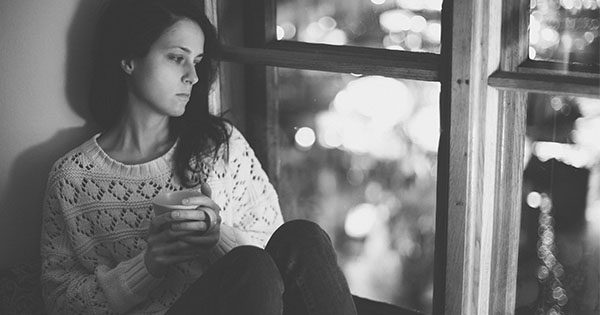Depression is a common and serious medical illness that negatively affects how you feel, the way you think, and how you respond to situations. It usually causes feelings of loneliness or sadness. One type of depression that’s related to changes in seasons is Seasonal Affective Disorder (SAD).

People with SAD experience periods of mood swings. The symptoms are closely similar to depression itself and these symptoms oftentimes occur during the fall and winter months.
According to the American Psychiatric Association, SAD has been linked to a biochemical imbalance in the brain caused by shorter daylight hours and less sunlight in winter. This causes people to feel sad, to lose interest in activities they once enjoyed. Feelings of worthlessness or guilt creeps in and sometimes even thoughts of death or suicide.

SAD affects nearly 10 million Americans each year, and is four times more common in women than in men. If you think you are going through SAD, it can be helpful to try some coping strategies. Here are some ways to deal with the winter blues.
1. Stay in touch.

Keep your communication line with family and friends open. Staying in touch with them means you have someone to talk to when you feel low. Don’t withdraw from life, try to socialize or make friends at work in school.
2. Be more active.

Being sad can add to your feeling of low energy. Find an exercise you can easily do everyday. Regular activity such as jogging, running, or brisk walking can boost your mood if you have depression. Try going out with friends or joining outdoor activities too to get your endorphins pumping.
3. Eat healthy.

Some people either overeat or they don’t feel like eating when they’re depressed. If you are aware of what you are eating, it’s better to manage your appetite and regulate your meal schedule. Find creative ways to make your meals look enticing to eat so you won’t compromise your health.
4. Avoid alcohol.

Drinking alcohol is not advisable when you’re experiencing SAD. It becomes a temporary solution that could lead to a habit. Some people see it as an escape from reality, but turning to substances to relieve symptoms can lead to dependency.
5. Enjoy the warm sun.

While symptoms will eventually improve on their own with the change of season, they can improve more quickly with a little treatment especially from the sun. Our bodies have their own “body clock” that tells us when to sleep, wake up, and eat. Environmental cues like sunlight and temperature can affect this internal clock. As seasons change, there is also a shift in our “body clock” that causes us to be out of step with our usual routine. To help your body keep its rhythm, try to get as much sun as you usually would or invest in a light therapy lamp.
6. Get enough sleep.

Your daily habits and activities can affect how well you sleep at night. It’s best that you note down your daily routine and change them if you must to help you sleep better. Setting a bedtime will help your body get used to a sleeping schedule. If you have a hard time falling asleep or staying asleep, try some relaxation techniques.
7. Find healthy ways to express your sadness.

Release those feelings of loneliness and sadness through something creative or productive. Writing, drawing, listening to music, cooking, learning how to play an instrument or any activity that will help you cope with your emotions in a positive way is worth a go.
8. Seek help.

Seek help from family, friends, or medical professionals. Experiencing symptoms of SAD isn’t something one should ignore. Don’t brush them off as the winter blues and simply hunker down until spring. Talk to people you trust to help lift your spirits and guide you out of a depression like SAD.
Acknowledging what you truly feel is a good start in managing seasonal affective disorder, but don’t get frustrated if you don’t feel better right away. Remember that attempting to defeat it is a sign of strength and growth towards a better version of yourself.

